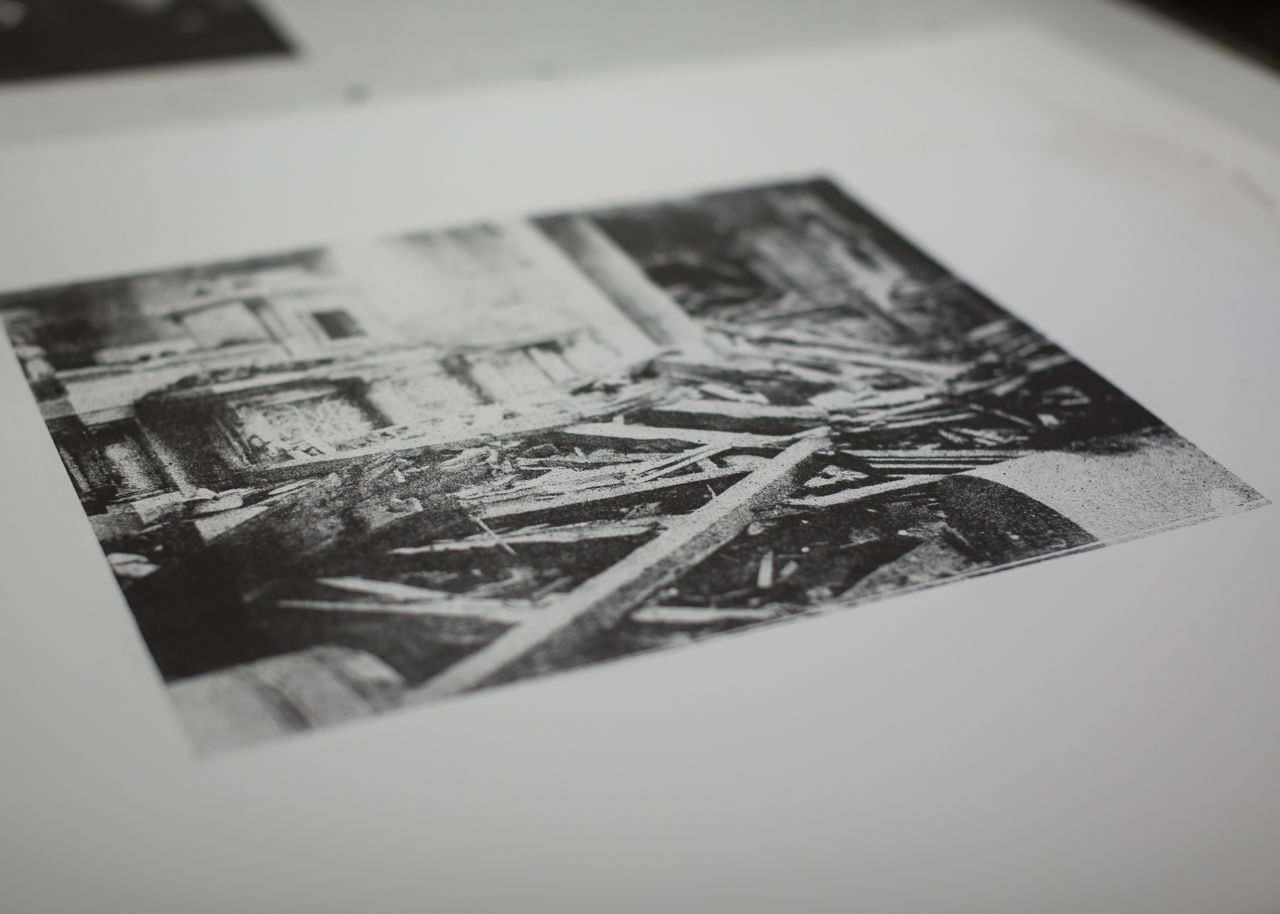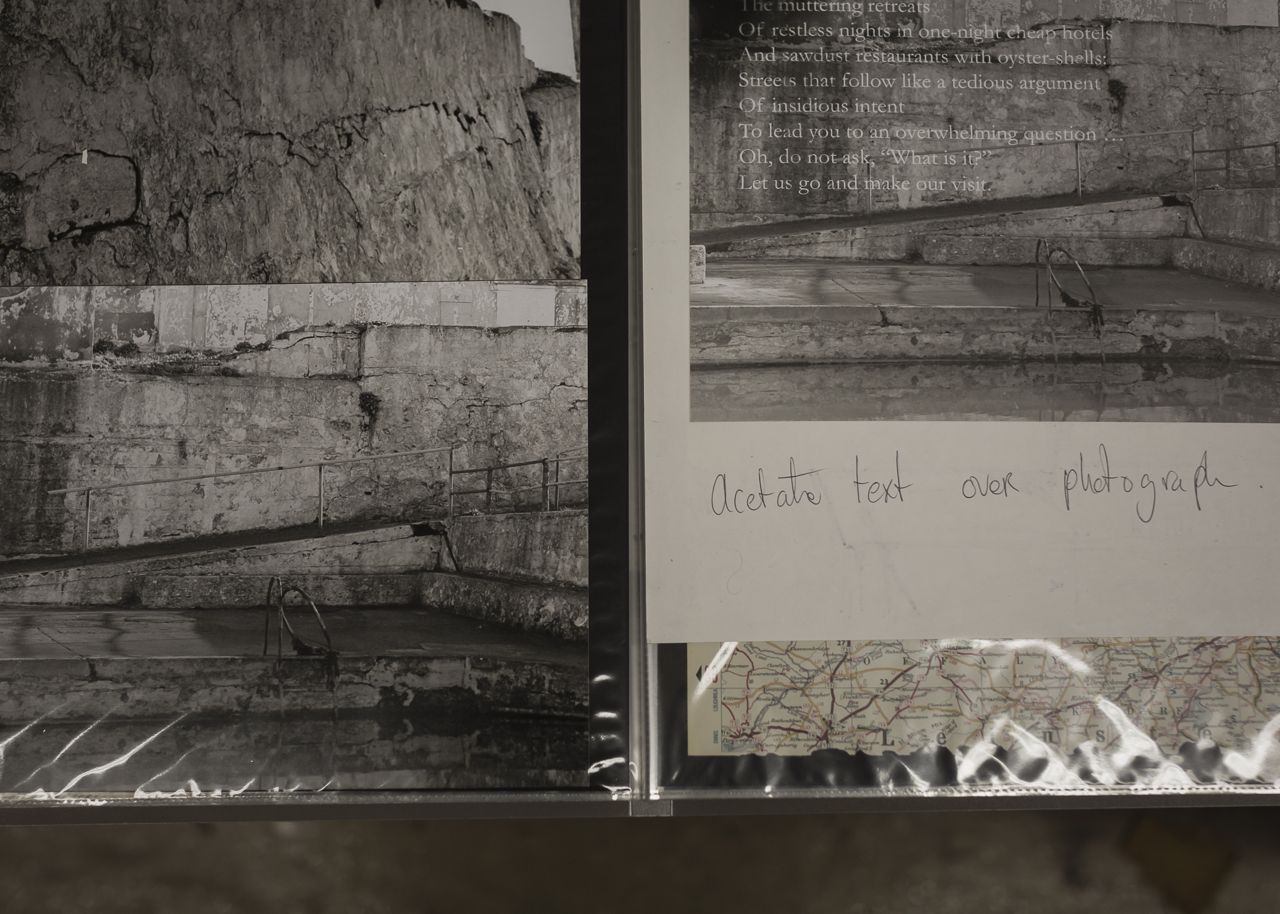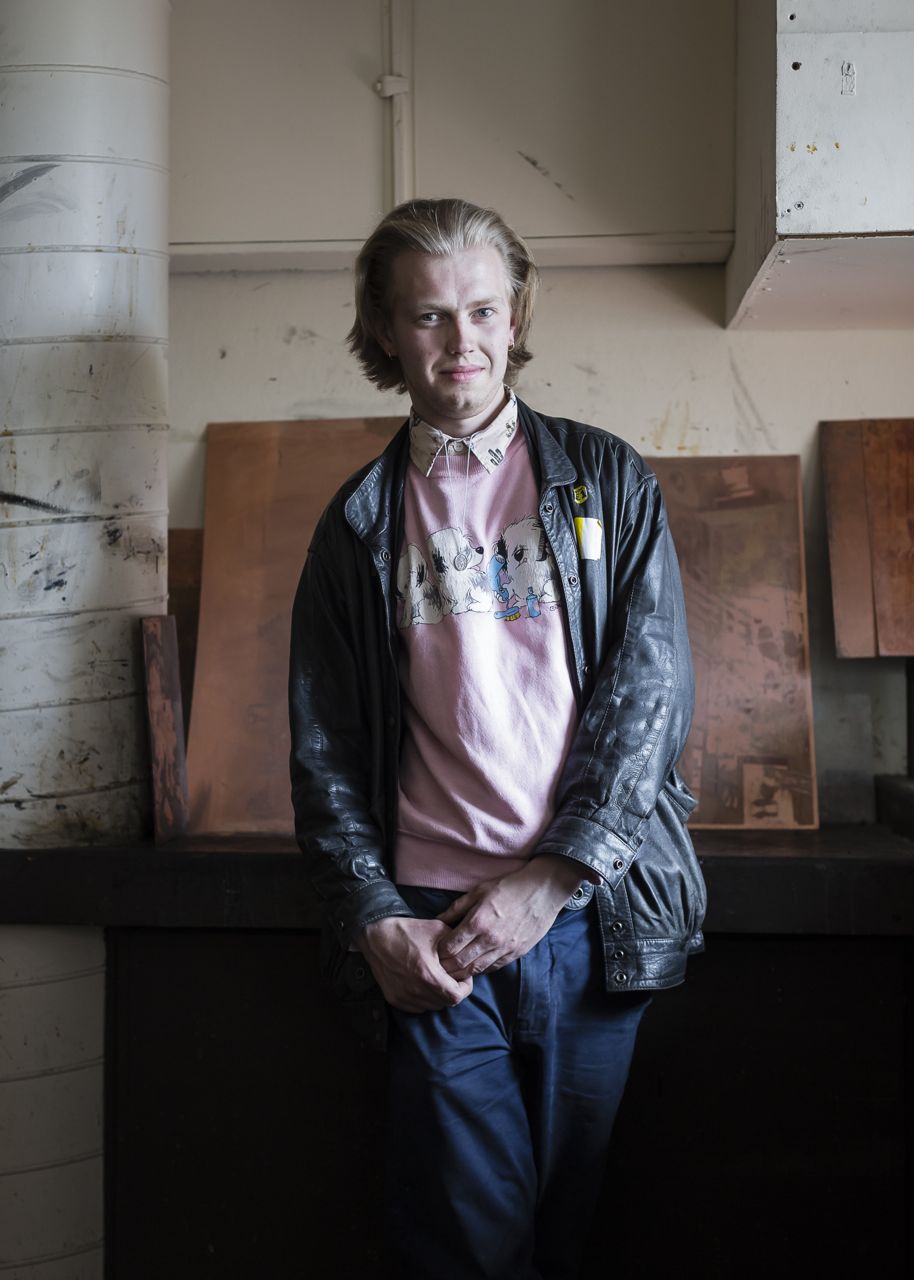Student Conversation - Rian Coulter
"Critical thinking in NCAD is really unique. You’re not just learning something somebody else has done, you’re trying to produce something of your own."
On process:
My work starts off with photographic images I take on my camera phone. They’re images of fairly innocuous, everyday mundane objects. What I’m working on at the moment is the pavement and concrete. After water it’s the most used resource in the world. So I am documenting the different characteristics that concrete and cement can have. I transfer my images onto photosensitive metal plates, expose them under ultraviolet light and make plates from using a chemical solution. The resulting black and white image is faithful to the photograph and can be inked and transfered to paper to create your printed image.
On influences:
What’s happening in the world is an inspiration for most people’s work. I don’t think you can just sit in your studio, pick up a pencil and produce something with no reference. In general I think people are looking with a very critical eye towards materials and the built environment. We’re analysing and examining how we use them as consumers. For example you can look at a Michelangelo or Carrivagio and admire the supreme execution and skill. You can easily appreciate this. Whereas, if you look at Warhol, his output invokes a different reaction because it’s a social commentary on fame rather than being evocative of social patterns. That’s the unique aspect of fine art.
On learning:
Critical thinking in NCAD is really unique. You’re not just learning something somebody else has done, you’re trying to produce something of your own.


On print:
One of the appealing aspects of Fine Art Print for me is the different processes you can work with; copper etching, lithography etc. When you print something, what you are getting is interference, interupption, a spontaneous result that you didn’t necessarily legislate for in the first place. You get happy accidents. The transfer, the transaction and reaction produces unique results and these become areas of discoveries.
On progress:
There’s a definite distinction in how my work is progressing from skills to developing conceptual and intellectual acumen. A lot of my work is to do with collecting in flea markets, car boot sales, junk shops that kind of thing. My phone is a fantastic resource, I have ten thousand photos in there. It’s all a part of my artistic awareness.
On NCAD:
I came in here only knowing one person and now I am about to become vice president of the student’s union. NCAD is a very inclusive and welcoming environment. It extends to what Joseph Beuys called social sculpture. People who create anything, be it a cake or dress or whatever, if they do it with care and conviction and in their own way then they are a social sculpture and contributing to everyday life. This is something I am very conscious of in my work, NCAD is a stakeholder in the cultural momentumum of the country.

 On process:
On process: